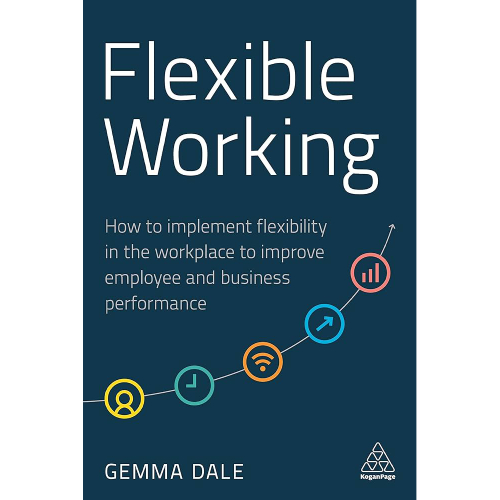Flexible Working: How to Implement Flexibility in the Workplace to Improve Employee and Business Performance
Author: Gemma Dale
Publisher: Kogan Page (2020)
ISBN – 10: 1789665914
Pages: 248
The author Gemma Dale is a Senior HR professional, writer and coach with 20 years’ experience. She is a lecturer at Liverpool John Moores University Business School. Her book Flexible Working was short listed in the Business Book Awards 2021.
The year 2020 will always be seen as a pivotal one for HR as a profession, as organisations around the world had to adapt to unprecedented challenges and new ways of working. The past year has seen many businesses introduce new flexible working as a business necessity, but a desire for flexible working has now become a key concern for employees.

Gemma in her book Flexible Working provides the reader with a practical guide that guides HR practitioners, showing them how to develop an effective flexible working strategy that meets the needs of both employees and the business. The reader will learn how to communicate these to all sectors of the business.
The book provides the reader with the skills and knowledge that will enable them to develop an effective flexible working strategy to meet the needs of employees and the business. It explains how to develop effective flexibility policies and processes as well as how to communicate and train line managers. It also includes advice on how to overcome barriers to flexible working, dispels common myths and offers guidance on the different forms of flexible working available to organisations.
Part One of the book sets out the rich evidential basis for flexible working as a driver of organizational performance and its impact on productivity. Part Two provides a step-by-step approach to ensuring that flexible working is not only successful from day one but also sustainable in the longer term.
It illustrates that working practices outside the standard 9-5, five-days-a-week in the office can benefit a company. It drives employee engagement and performance, reduces costs and workplace stress and improves talent acquisition from a more diverse talent pool. The reader is provided with case studies from organisations such as Zurich Insurance, and supported by rigorous analysis of flexible working data, this is essential reading for all HR professionals and productivity specialists.
